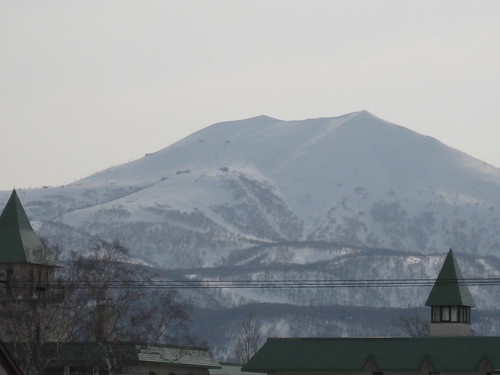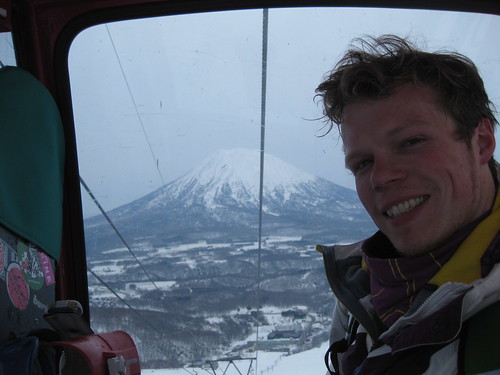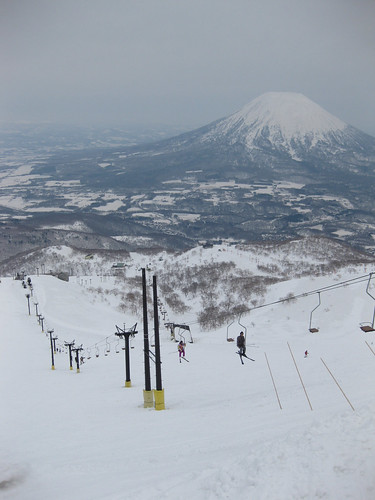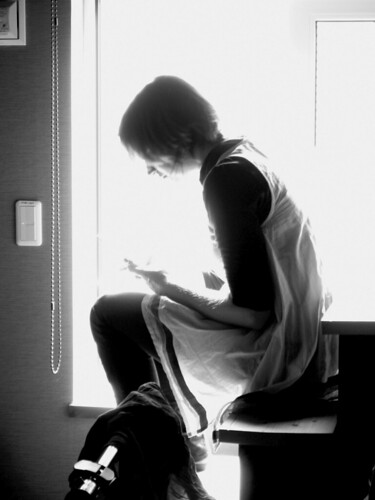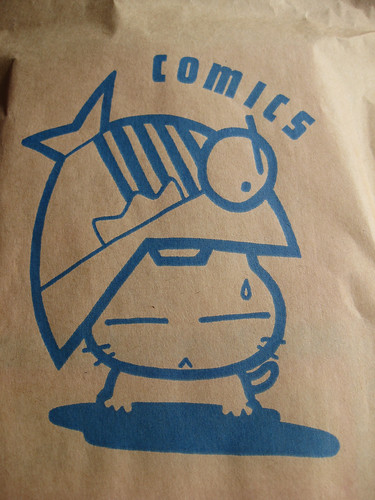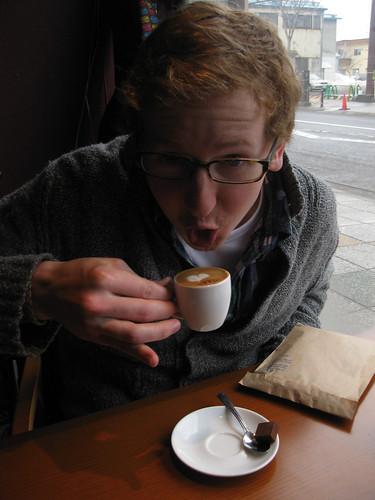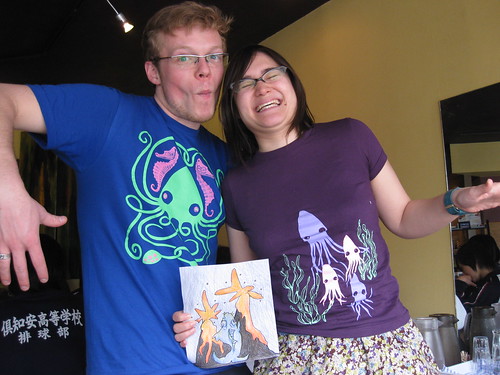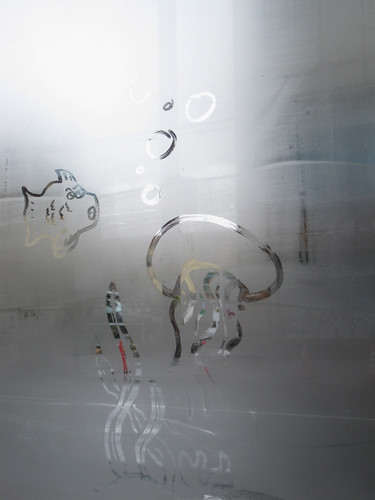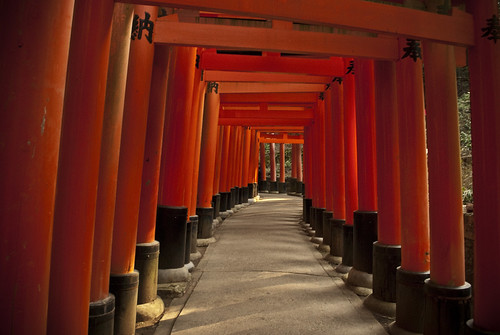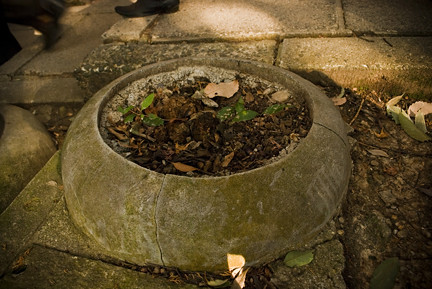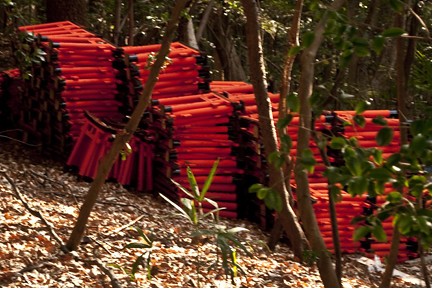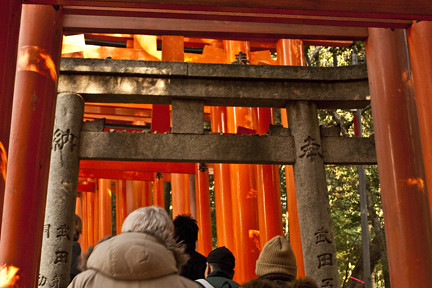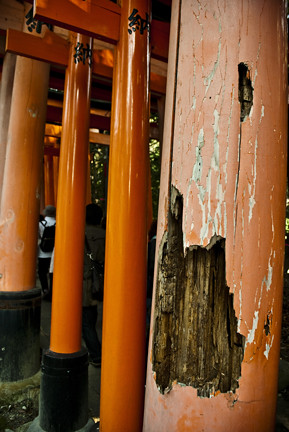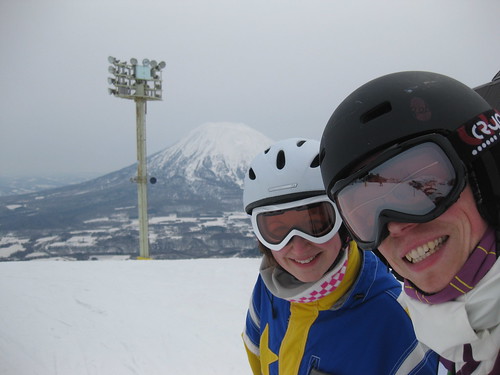
Least there be any doubt, there is still snow in Hokkaido. Heather and I struck out to make the most of it by getting in our last boarding weekend of the season at Hirafu/Niseko. Though the HAJET musical/after party/late night/our 11 am check out time and plans to meet up with Sonomi and Mark for lunch in Kutchan all conspired to keep us off the hill for most of the weekend, we did get in a few hours of boarding on Saturday.
It was definitely the latest in the season that I have ever been out in the snow in a meaningful way, but I would say the conditions were as good as my last visit to Niseko, if not a little better since, well, we could actually use a lot of the hill. A guide had described the base as “corn snow,” and I have to say that I far prefer it to the slushy alternative that Ontario yields late in the season. Though it’s not as forgiving when you fall as the standard Niseko powder, its granular consistency makes turning a breeze.
Foolishly, I got either over confident or ambitious and decided to leave Heather in the low lands while I rode the lifts as high as they would go on Hirafu that day, heading to the top of the peak chair. It was somewhere I hadn’t been since that first weekend on a board with Mark back in January, and I was determined to show up the mountain with how far I’d come in the interim. From near the peak, I was treated to a spectacular view of Mount Yotei, Kutchan, and the surrounding towns…
…but it was all down hill from there{sic}. While the lower elevations with their corn snow were in some happy transition between winter and spring, the peak area held on to winter tenaciously. This late in the season, there hadn’t been enough snow to coat it in powder, and what snow there was had frozen up into a slick sheet on one side and a rocky field of micro glaciers on the other. Being unable to get much purchase on the slick sheet, I took my chances with the glacier field and wound up going down hard on one of the ridges of ice knee-first. I could almost hear the mountain laughing at me and my confidence.
In all, though the boarding was fun, seeing the mountain so far along in its melt was a little sad. Every time I’ve rolled up on Niseko this season, it has been a postcard example of a winter wonderland. The consistent soft white of it has inspired Heather to draw comparisons to a wintery Narnia. And yet now, though the majority of the runs are still good and snowed in, the trees and the cliffs peek out along their peripheries a little too much these days, killing our ice age fantasies more and more. It’s like coming back to what was once a perfect, crisp ice sculpture, only to find it a far, sagging, watery cry of what it once was. You can still see what you saw in it, but the loss makes it almost not worth the second glance. I guess I’m happy to be done with the mountain for this season, happy to allow it to return to summer on its own, happy to wait until December before I return to it for another run.
But I will be back in December, and I will ride back up to that peak, and the joke’s on the mountain because this time she will be mine.
Oh yes, she will be mine.
Mountain Day 12

